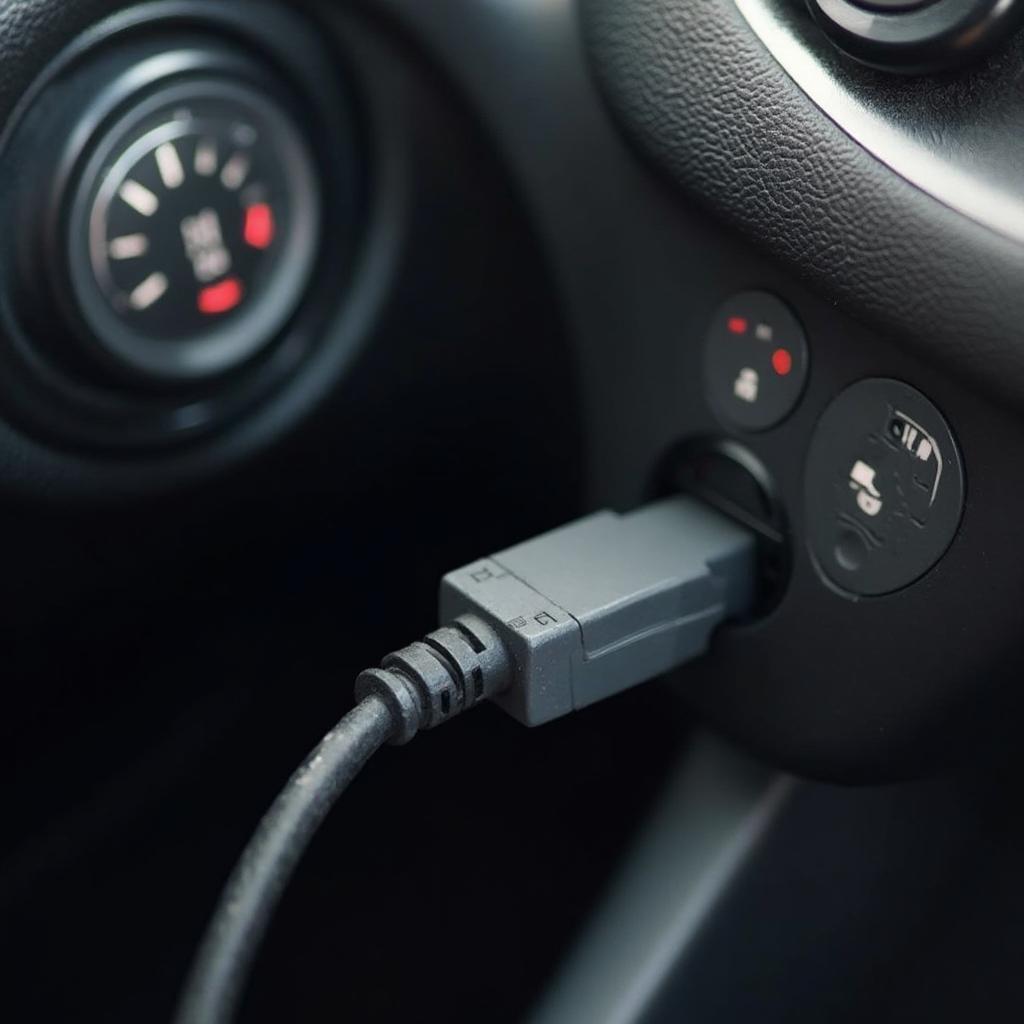OBD2 cat temp readings are crucial for understanding the health and efficiency of your vehicle’s catalytic converter. This article delves into the intricacies of monitoring catalytic converter temperature using your OBD2 scanner, providing you with the knowledge to diagnose potential issues and maintain optimal vehicle performance. Let’s explore everything you need to know about this essential parameter.
What Does OBD2 Cat Temp Indicate?
Your vehicle’s catalytic converter plays a vital role in reducing harmful emissions. It works by converting toxic gases into less harmful substances through chemical reactions. These reactions require high temperatures, typically between 600-800°F (315-426°C). The OBD2 cat temp reading tells you the temperature inside the catalytic converter, providing valuable insights into its operating efficiency. A temperature that’s too low or too high can indicate problems. For instance, a low cat temp might suggest a failing catalytic converter or issues with the engine’s fuel delivery system. Conversely, excessively high temperatures can be caused by a clogged catalytic converter, rich fuel mixture, or even engine misfires.
How to Check OBD2 Cat Temp
Checking your OBD2 cat temp is a straightforward process using an OBD2 scanner. First, locate your vehicle’s OBD2 port, typically found under the dashboard on the driver’s side. Plug the scanner into the port and turn on the ignition. Navigate to the “cat temp” parameter on your scanner. The reading you see reflects the current temperature inside your catalytic converter. catemp11 obd2 Remember, the temperature will fluctuate depending on engine load and driving conditions.
Interpreting OBD2 Cat Temp Readings
Interpreting OBD2 cat temp requires understanding the normal operating range and identifying deviations. A healthy catalytic converter will typically reach operating temperature within a few minutes of starting the engine and maintain a consistent temperature within the expected range during normal driving conditions. Significant drops or spikes in temperature warrant further investigation.  OBD2 Scanner Connected to a Car's OBD2 Port
OBD2 Scanner Connected to a Car's OBD2 Port
Common Problems Related to OBD2 Cat Temp
Several issues can affect OBD2 cat temp readings. One common problem is a faulty oxygen sensor. Oxygen sensors provide critical data to the engine control unit (ECU), which regulates the air-fuel mixture. A malfunctioning oxygen sensor can lead to an incorrect air-fuel ratio, affecting the catalytic converter’s temperature. Another potential culprit is a clogged catalytic converter. catemp obd2 definition Over time, unburnt fuel and other deposits can accumulate within the converter, restricting exhaust flow and causing overheating.
Troubleshooting OBD2 Cat Temp Issues
Troubleshooting OBD2 cat temp issues often begins with checking for related trouble codes. Your OBD2 scanner can retrieve diagnostic trouble codes (DTCs) stored in the ECU, providing clues about potential problems. For example, the code P0420 often indicates a catalyst system efficiency below threshold, suggesting a potential issue with the catalytic converter itself. acronym obd2 catemp11 It’s essential to address these codes promptly to prevent further damage to your vehicle’s emission control system.
Why is Monitoring OBD2 Cat Temp Important?
Monitoring your OBD2 cat temp is essential for several reasons. Firstly, it allows you to detect potential problems early on, preventing costly repairs down the line. Regularly checking the cat temp can help you identify a failing catalytic converter before it completely fails, saving you the expense of a full replacement. Secondly, monitoring this parameter ensures your vehicle operates efficiently and complies with emission regulations. chevrolet obd2 code p0496 A properly functioning catalytic converter is crucial for minimizing harmful emissions and protecting the environment.
How Often Should You Check OBD2 Cat Temp?
While there’s no strict rule, checking your OBD2 cat temp every few months or during regular maintenance checks is a good practice. More frequent monitoring might be necessary if you suspect a problem with your catalytic converter or notice unusual exhaust smells. how to trick 02 monitor on obd2
Conclusion
Understanding and monitoring your OBD2 cat temp is a crucial aspect of vehicle maintenance. By regularly checking this parameter and addressing any deviations from the normal range, you can ensure the longevity and efficiency of your catalytic converter, maintain optimal vehicle performance, and minimize harmful emissions.
FAQs
- What is the normal operating temperature range for a catalytic converter?
- What are the common causes of a low OBD2 cat temp reading?
- What does the P0420 trouble code indicate?
- How can I troubleshoot a high OBD2 cat temp reading?
- What are the benefits of regularly monitoring OBD2 cat temp?
- What tools do I need to check my OBD2 cat temp?
- Can a faulty oxygen sensor affect the OBD2 cat temp reading?
Need help with your car diagnostics? Contact us via WhatsApp: +1(641)206-8880, Email: cardiagtechworkshop@gmail.com or visit us at 789 Elm Street, San Francisco, CA 94102, USA. Our 24/7 customer support team is ready to assist you.
